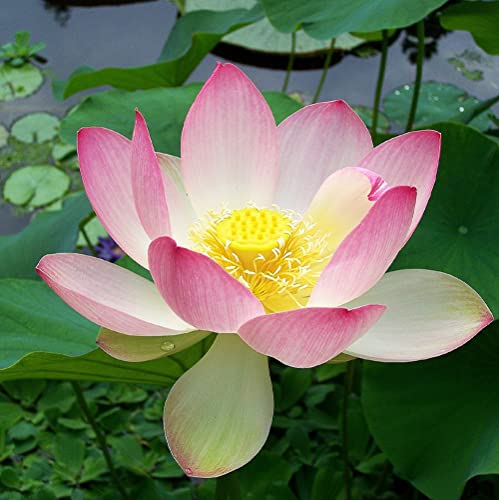How to grow sacred lotus – for an ancient pond plant that attracts good fortune and enhances garden Feng Shui
The sacred lotus plant has been adored for thousands of years as a symbol of purity and prosperity

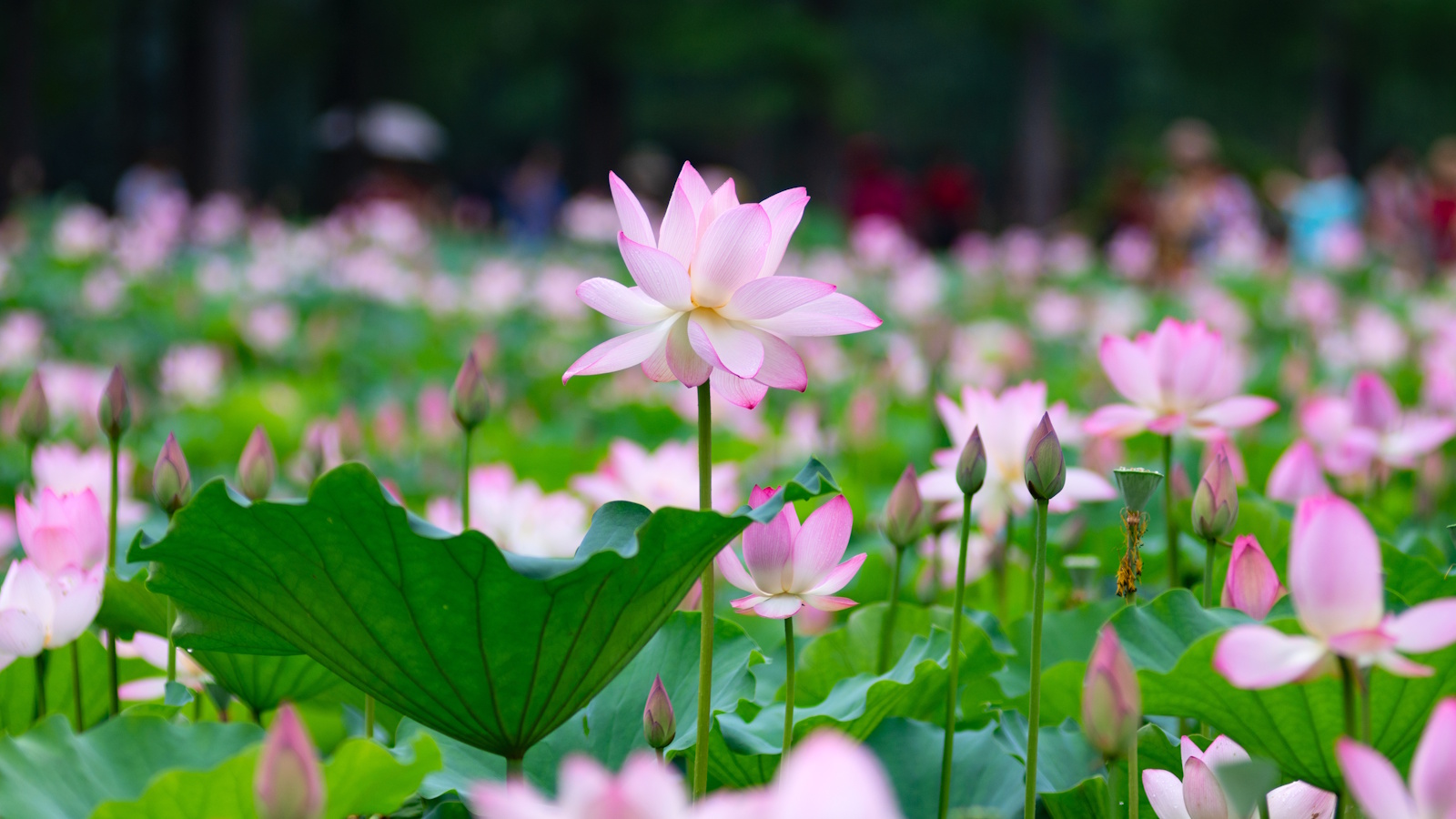
The sacred lotus, or Nelumbo nucifera, has been adored for thousands of years, not just for its lily-like blooms but also for its cultural significance. This ancient aquatic plant has long been grown in water gardens in sacred places of worship and royal palaces, not least because it is believed to attract good fortune and prosperity and enhance garden Feng Shui.
Beyond symbolism, horticulturally, the sacred lotus is an impressive species. With its round, large pads and striking flowers that open on upright stems a foot or so above the water's surface, Nelumbo nucifera adds instant drama to any water garden.
So, if you are considering how to create a wildlife pond in your backyard this year, learning how to grow sacred lotus is a good idea. By using these unique pond plants that are undeniably beautiful, you can be sure to take your pond to the next level. Here, one water garden expert from Texas reveals how to successfully cultivate this showstopping plant and bring good fortune to your backyard.
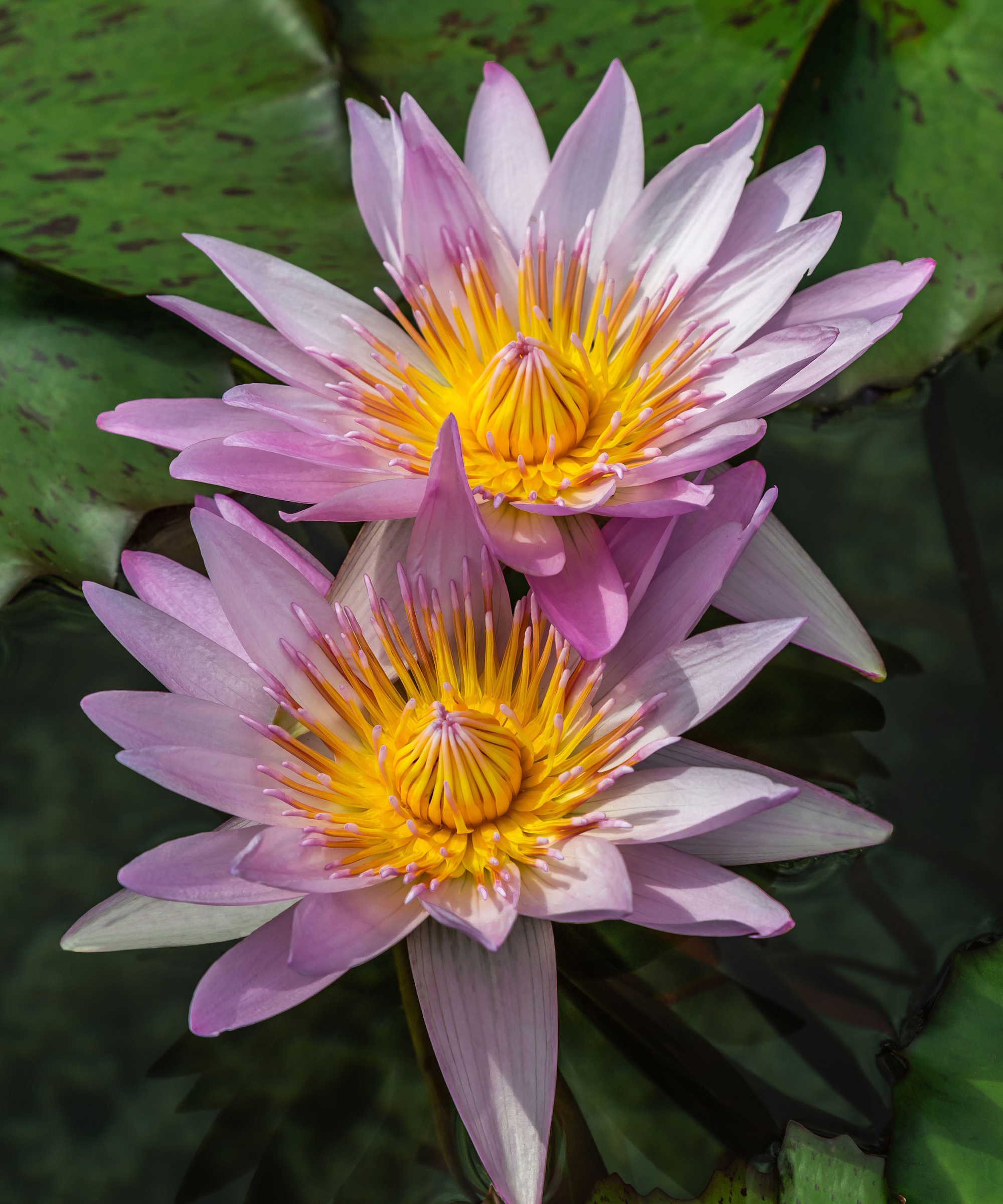
How to grow sacred lotus
Sacred lotus plants are native to Asia and Australia, although today established populations of Nelumbo nucifera have been reported across much of North America, including in Florida, Alabama, Georgia, Louisiana and New York.
However, in some states, including Wisconsin, the sacred lotus is listed as an invasive plant, notable for its vigorous and spreading habit. So, while beautiful, it is always best to do your research to understand if growing this species is prohibited in your region.
Growing habits of the sacred lotus plant
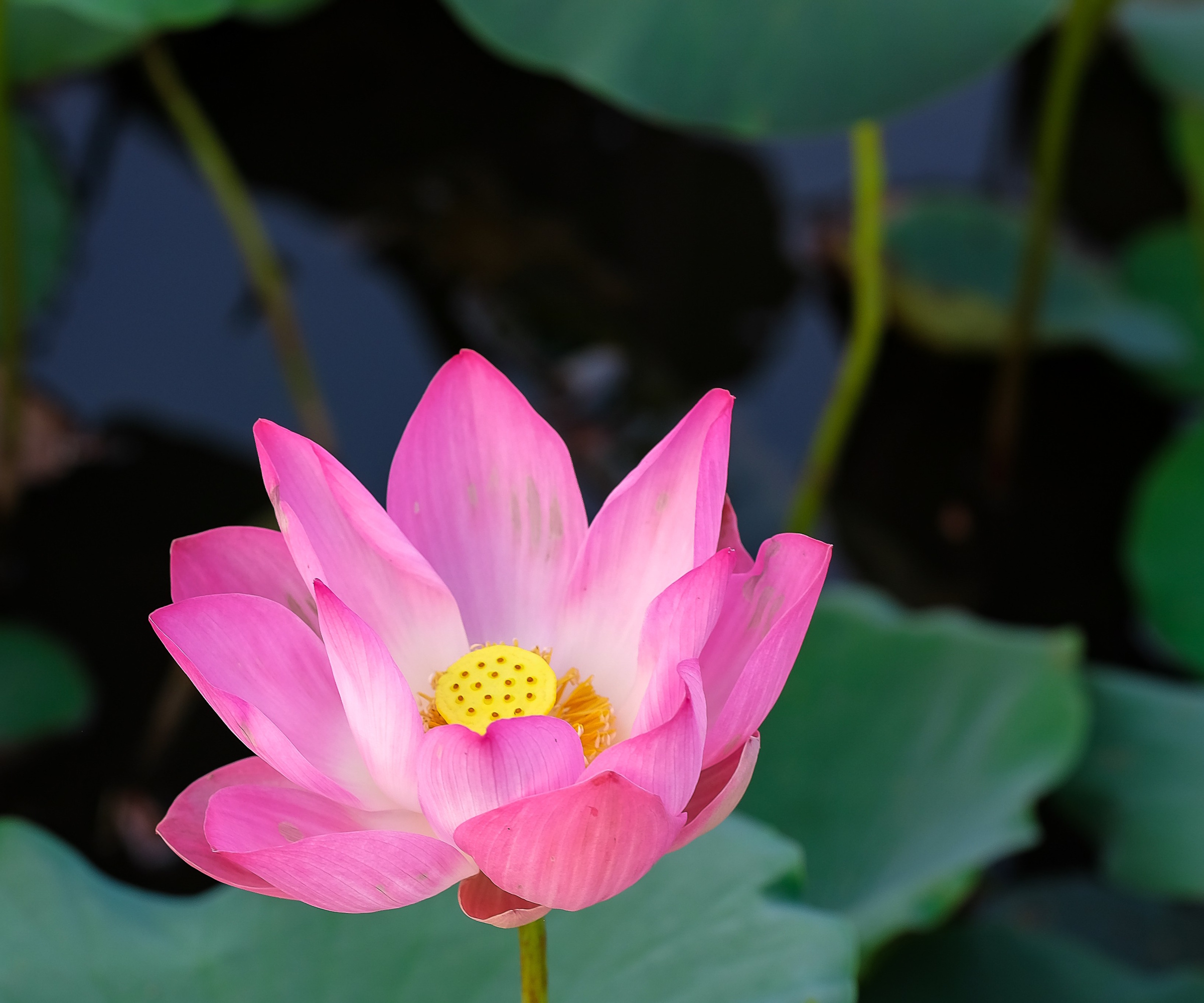
'Sacred lotus are some of the best pond plants you can grow,' says John Peitsmeyer, water garden expert and current president of the Heart of Texas Water Garden and Pond Society. 'They are rhizomatous perennials that thrive in still or slow-moving waters, with large leaves and special blooms that create a breathtaking canopy wherever they are grown.'
Like their American lotus cousins - which are also in the Nelumbonaceae family - sacred lotus plants are emergent perennials, meaning they are rooted in water but extend their leaves and flowers above the surface.
Design expertise in your inbox – from inspiring decorating ideas and beautiful celebrity homes to practical gardening advice and shopping round-ups.
In the right conditions, sacred lotus plants can spread rapidly, either through self-seeding or underground rhizomes which store energy through the winter and send up new shoots in spring.
'If you are growing sacred lotus in a back or front yard pond, ensuring that they receive at least six hours of full sun daily is crucial,' John says. 'They love the heat and need warm temperatures to thrive, although can be grown from US hardiness zone 4. In colder regions, they will die back to their roots over winter but return each year when the water warms up in spring.
'Beyond their ornamental value, sacred lotus holds deep spiritual significance in many different countries. For centuries, the sacred lotus has been revered in Buddhism and Hinduism as a symbol of purity, enlightenment and prosperity,' John notes. 'It would certainly make a meaningful addition to any water garden.'
Sacred lotus seeds are available from Walmart. To sow, carefully file or sand the seed to expose a small amount of white or cream-colored endosperm within the seed. Then, soak the seeds overnight, before sowing in damp compost. Sprouts should be visible within five to seven days.
'Sacred lotus seeds are known to be incredibly long-lived,' John adds, 'with some seeds proving to be viable after 1,000+ years.'

John Peitsmeyer is a native Texan, Real Estate Inspection Company Owner and retired Professional Inspector. Serving as the current president of the Heart of Texas Water Garden and Pond Society from 2022 to 2025, John has a passion for water gardening. Living in China Spring, Texas, with his wife Susan, they enjoy caring for their chickens, ducks, and koi and goldfish ponds.
Care guide for sacred lotus
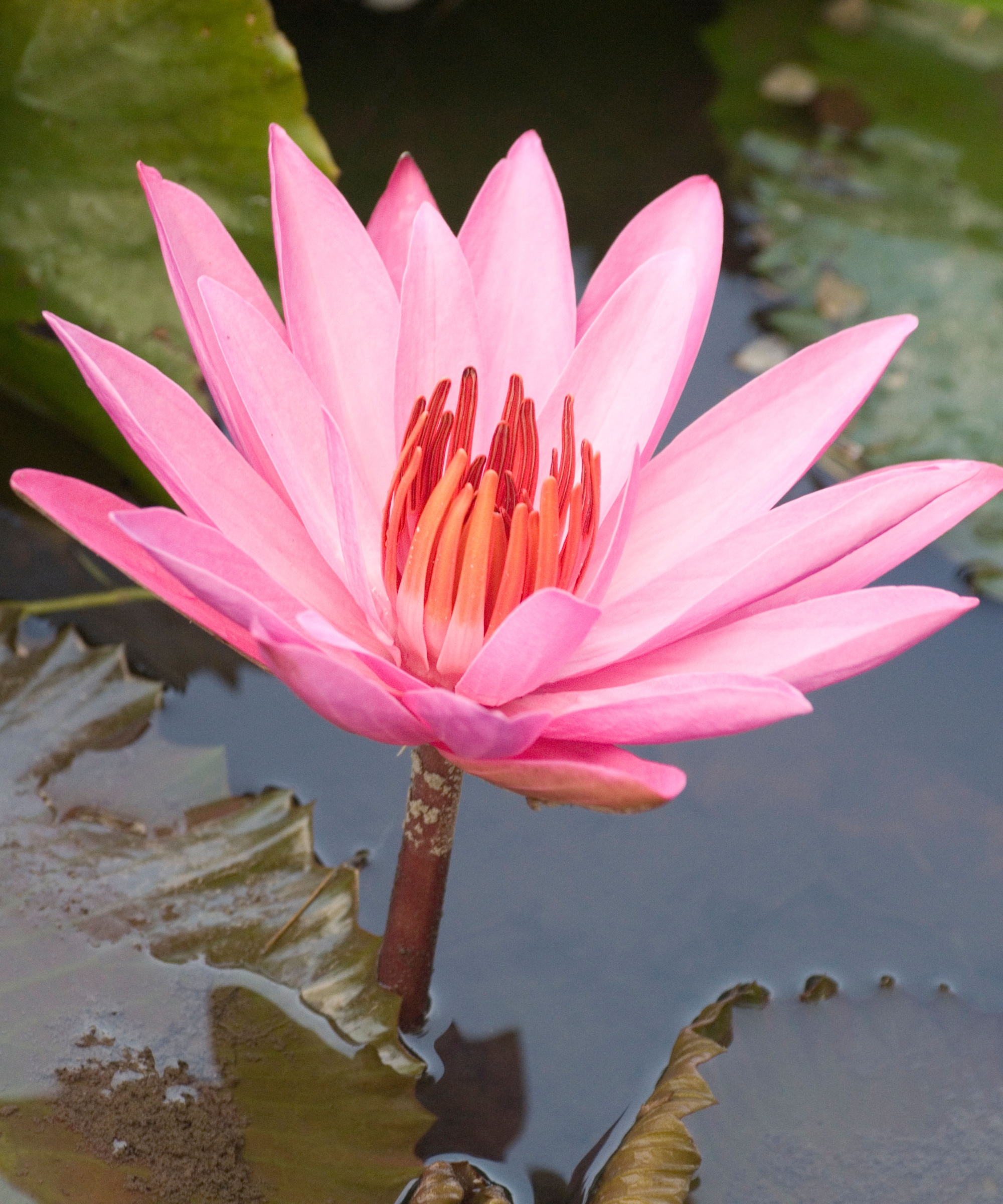
Soil: 'Sacred lotus plants thrive in muddy, nutrient-rich sediments, such as along the edge of river banks,' John says. 'While they can tolerate seasonal drying, they prefer consistent water.' If you have sourced a lotus plant from a local nursery, it will typically arrive in a container filled with aquatic soil, ready to be submerged in your pond. If, however, you are growing from seed, you can transplant to a pond plant basket, available to order from Walmart, when the seedling is big enough. Again, use damp aquatic soil to help the plant develop.
Light: 'Sunny yards will generate the best results for sacred lotus plants,' says John. 'These plants do best with at least six hours daily, and flowering can be affected if light levels are any less.'
Fertilizing: If grown in natural wildlife ponds, there should be plenty of organic material in the soil that will feed your plant and keep it healthy. However, in smaller ponds and containers, it can be a good idea to apply some feed in the spring and summer months with an aquatic fertilizer, using something like these pond plant tablets, available from Walmart.
Pruning: Prune sacred lotus plants in late winter, removing all dead foliage, stalks and seed pods to make room for new growth. 'They can be aggressive spreaders,' John says, 'so regular pruning and cutting back will help to control this vigorous pond plant.'
Toxicity: Sacred lotus is not considered toxic. In fact, the plant has a long history of culinary and medicinal usage. 'The seeds can be eaten raw, roasted or added to desserts,' John says. 'The leaves can also be used to wrap foods, including sticky rice or vegetables.' Importantly, always do your homework on the exact species you are growing before you consume any parts of the lotus plant, as not all varieties are edible.
FAQs
How deep should a pond be to grow sacred lotus?
'A sacred lotus plant should be submerged in water that is around 12 to 24 inches (30 to 60cm) deep,' John says. 'For this reason, lotus plants can be used in a variety of shallow ponds. Just make sure they receive plenty of sunshine to thrive.'
What you might not know is that sacred lotus plants are oxygenating pond plants, meaning they absorb carbon dioxide and give off oxygen while also helping to keep your pond looking clear. 'Not only do these plants oxygenate the water,' John says, 'but they also improve the pond ecosystem and provide habitat for fish.'

Thomas is a Content Editor within the Gardens Team at Homes and Gardens. He has worked as a professional gardener for both public spaces and private estates, specializing in productive gardening, growing food and flowers. Trained in Horticulture at the Garden Museum, he has written on gardening and garden history for various publications, including The English Garden, Gardens Illustrated, Hortus, The London Gardener and Bloom. He has co-authored a Lonely Planet travel book, The Tree Atlas, due out in 2024.
